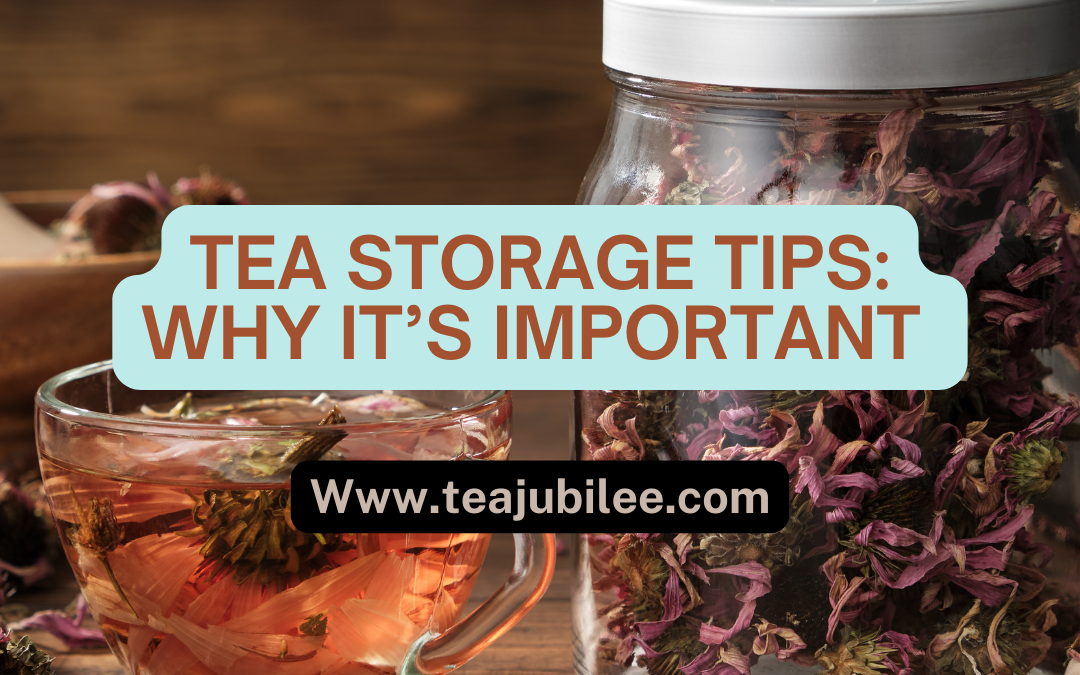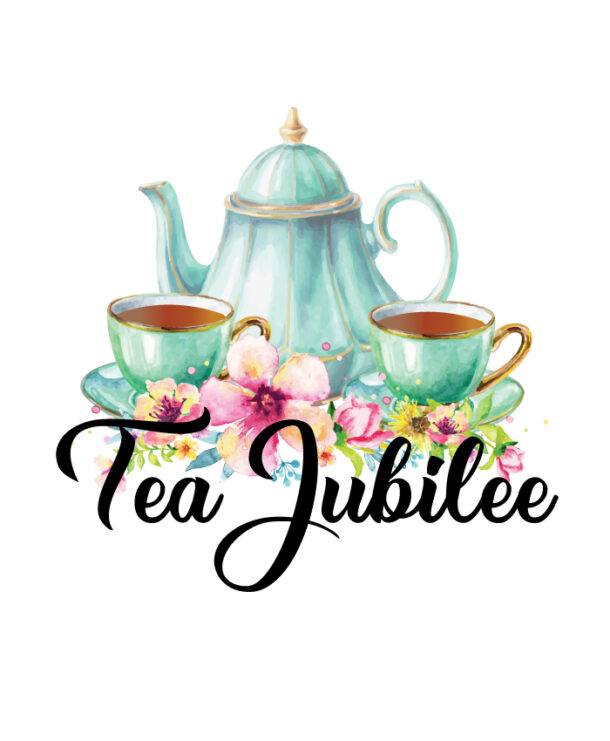==================
A Caveat and Affiliates
First off, a little caveat: within my articles you will find affiliate links, meaning if you buy them, I get a small commission. Your cost is not affected. In addition, I am an Amazon Associate and I earn from qualifying purchases on Amazon.
And yes, if I say that I recommend a product here, it means I truly believe it is a good product. I refuse to recommend any product that I have not researched and believe to be a good value.
Even better, I provide you with a very clear picture of the product, it’s use, and the probable value.
Earning your trust is important to me. I run this website myself and the commissions and donations help support the site.
Sound reasonable and fair enough? Let’s continue to the article.
==================
Contents
Tea Storage Tips To Preserve Freshness: Essential Practices for Maximum Flavor
Welcome to Tea Jubilee! Today I have written this blog post all about Tea Storage Tips
Tea lovers understand the importance of maintaining the freshness of their cherished leaves. Proper storage is essential for preserving tea’s flavor, aroma, and overall experience.
When tea is not stored correctly, it can lose its unique qualities or become stale too quickly.

Various types of tea are stored in airtight containers on shelves, away from direct sunlight and moisture. Labels indicate different tea varieties.
Keep your tea away from light, air, moisture, and strong odors to ensure it remains fresh.
This means selecting the right storage containers and placing them in optimal conditions.
Different types of tea may also need special attention, so understanding these nuances helps maintain their freshness.

By following simple tips, you can enjoy the full potential of your tea leaves every time you brew.
Proper storage extends the shelf life and enhances the daily ritual of tea drinking.
Key Takeaways
- Proper storage is crucial to retaining tea’s taste and aroma.
- Choose suitable containers and storage conditions.
- Different teas may need specific storage considerations.
Understanding Tea Freshness
Tea freshness is crucial in determining the tea’s flavor, aroma, and overall quality.
This subsection explores the key factors that impact the freshness of tea and its significance in maintaining the ideal tea experience.
Factors Affecting Freshness
Several factors can affect the freshness of tea. The primary elements include light, air, moisture, and temperature.
Light exposure can degrade tea leaves, causing flavor loss and discoloration.
I always store my tea in opaque, airtight containers to combat this.
Air is another major culprit. Exposure to oxygen leads to oxidation, which can alter the tea’s taste and aroma.
I recommend using vacuum-sealed containers to keep oxygen out.
Moisture can cause mold growth and spoil the tea.
It’s essential to keep tea in a dry environment. I often use silica gel packets in storage containers to absorb excess moisture.
Temperature fluctuations can also affect the tea’s quality.
I store my tea in a cool, stable environment, avoiding places near heat sources.
Significance of Freshness in Tea Quality
Freshness directly influences the tea’s sensory characteristics.
Fresh tea offers a vibrant, full flavor and an enchanting aroma that stale tea cannot match.
The taste of fresh tea is lively and robust. Aged or improperly stored tea can develop a flat or even unpleasant taste.
Aroma is significantly impacted by freshness. Fresh tea has a fragrant, inviting scent, whereas old tea often lacks this appeal.
The appearance of fresh tea is more vibrant and visually appealing. Stale tea might look dull and lackluster.
Selecting the Right Storage Containers
To keep tea fresh, choosing the right storage containers is crucial. Let’s discuss the essential criteria for these containers and examine various materials and their properties.
Criteria for Ideal Containers
When it comes to choosing tea storage containers, several criteria are essential:
- Airtightness: An airtight seal prevents exposure to air, which can degrade the tea’s flavor and aroma.
- Opacity: Containers should block light, protecting the tea leaves from UV rays that cause deterioration.
- Size: Select a container that minimizes excess air space above the tea, reducing oxidation.
- Durability: Choose a sturdy container that can withstand regular handling without breaking.
An airtight, opaque, and correctly sized container ensures optimal preservation of tea quality.
Container Materials and Their Properties
Different materials have unique properties affecting their suitability for tea storage:
- Glass: Although transparent, glass containers are attractive and easy to clean. Use dark or frosted glass to block light.
- Metal: Tin or stainless steel is excellent for creating airtight, opaque containers. Ensure they are food-grade and have no harmful coatings.
- Ceramic: Ceramic containers are often opaque and can be quite decorative. Look for those with airtight lids to prevent moisture ingress.
- Plastic: Though lightweight, select BPA-free, food-safe options. Beware of lingering odors that could affect the tea’s flavor.
Each material has its benefits and trade-offs. Choosing the right one depends on balancing these factors to suit individual preferences.
Optimal Storage Conditions

To keep tea fresh and flavorful, attention must be given to temperature, humidity, light exposure, air tightness, and proper organization.
Temperature and Humidity Control
Maintaining the right temperature and humidity is crucial for tea storage.
Tea should be stored at a consistent temperature below 85°F (29°C). Excessive heat can degrade the leaves.
High humidity can lead to mold, so aim for less than 60% relative humidity. Using a hygrometer can help monitor these conditions. A cool, dry place like a pantry is often perfect.
Light Exposure and Air Tightness
Tea should be kept away from light. Direct sunlight can oxidize the leaves and diminish flavor.
Use opaque, airtight containers to protect against light and air.
Glass jars should be avoided unless they are stored in a dark place. Air-tight containers also prevent the tea from absorbing moisture and odors.
Organization and Placement
Organize tea by type and usage frequency.
Keep similar types together, such as green teas in one section and black teas in another. This makes it easier to find what you need.
Store older teas towards the front to use them first and freshly purchased ones at the back. Proper organization helps maintain a rotation that ensures freshness.
Special Considerations for Different Types of Tea

Different types of tea require unique storage methods to maintain their flavor and freshness. The following guidelines will help preserve the unique qualities of green, black, herbal, and flavored teas.
Green Tea
Green tea is delicate and easily affected by light, heat, and moisture.
I recommend storing green tea in an airtight container to keep it fresh. Ideally, the container should be opaque or in a dark place like a pantry.
Refrigeration can also help preserve its grassy, fresh flavor. Ensure the container is well-sealed to prevent it from absorbing odors from other foods. Loose-leaf green tea can last for a few months if stored properly. Matcha, in particular, benefits from being stored in the refrigerator.
Black Tea
Black tea is more robust than green tea but still benefits from proper storage.
I suggest keeping black tea in a cool, dark place to maintain its full-bodied flavor. An airtight container is ideal to protect it from moisture and air.
Avoid storing black tea in the refrigerator, as it can absorb unwanted odors and flavors. A metal or ceramic container keeps black tea fresh for up to a year. If the tea is in bags, keep it in its original packaging in an airtight container.
Herbal and Flavored Teas
Herbal and flavored teas have unique storage needs due to their varied ingredients.
I store these teas in airtight containers to safeguard their freshness.
Light and heat can degrade their flavors, so a cool, dark cupboard or pantry is perfect.
These teas can be particularly sensitive to strong odors, so keep them away from spices or spicy foods.
Flavored teas with added oils or dried fruits may have shorter shelf lives than pure herbal blends. Generally, herbal and flavored teas maintain their characteristics for around six months when stored correctly.
Maintaining Freshness During Use

Ensuring tea stays fresh during use involves careful handling and consistent storage methods. Controlling air, light, and moisture exposure maintains the tea’s flavor and aroma.
Proper Handling Techniques
I always use clean, dry utensils to avoid contamination when handling tea.
Exposure to ambient air can degrade quality, so I promptly reseal containers after each use.
Airtight containers, preferably opaque, prevent light and moisture from affecting the tea.
I avoid storing tea near strong odors, like spices or coffee, which can alter its taste.Monitoring for signs of staleness or mold ensures freshness.
Maintaining a dedicated storage place ensures the tea retains its unique characteristics with each brew.
Frequently Asked Questions

Storing tea properly is crucial to maintaining its flavor, aroma, and overall quality. Many have questions about the best storage methods, suitable containers, shelf life extension, and DIY approaches.
What is the best way to store loose-leaf tea to maintain its quality?
Store loose-leaf tea in an airtight, opaque container to maintain its quality.
Keep the container away from light, heat, moisture, and strong odors. A cool, dark pantry is ideal for tea storage.
Can tea be stored in the fridge to keep it fresh, and if so, how?
Storing tea in the fridge is generally not recommended as it can absorb moisture and odors from other foods.
However, if you must, use a completely airtight container to prevent these issues.
What are the most effective containers for preserving the freshness of tea?
The best containers for preserving tea freshness are made from non-reactive materials like tin, stainless steel, or dark glass.
Ensure they are airtight to block out light, air, and moisture. Avoid plastic containers as they can impart unwanted flavors.
How can you extend the shelf life of both bagged and loose tea?
To extend the shelf life of tea, store it in cool, dry, and dark conditions.
Use airtight containers and keep them away from direct sunlight, heat sources, and strong-smelling substances. Proper storage can extend the life of tea by months or even years.
Are there any DIY methods for keeping tea fresh longer?
DIY methods include creating airtight containers using mason jars with rubber-sealed lids or repurposing metal tins.
Adding desiccant packs can help control moisture levels. Always label and date your containers to keep track of freshness.
What specific steps can you take to ensure homemade tea stays fresh?
After brewing homemade tea, strain it and store it in a glass container with a tight-fitting lid in the fridge.
Consume within 3-5 days for optimal freshness. Adding a small amount of lemon juice can act as a natural preservative.
More From Tea Jubilee
The Vital Role Of Tea Plantations




